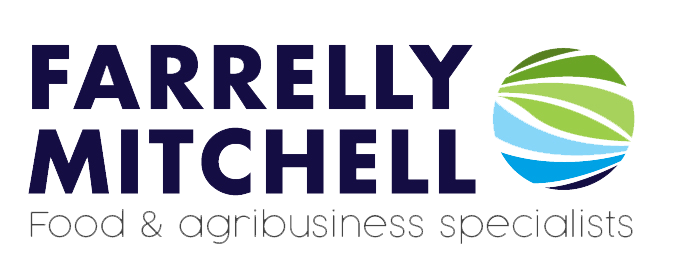Livestock shelters play an important role in ensuring the overall health, welfare, and productivity of farmed animals. They are crucial to the management of farm animals, providing protection against harsh weather conditions, predators, and diseases. When appropriately designed, animal shelters can positively influence animal growth, productivity, and reproductive success rates, while limiting the spread of infectious diseases, optimising feed intake, and reducing stress-induced production losses.
When building livestock shelters several factors must be considered, ranging from the capacity and location of the structure to climate resilience, and access requirements. Structures can range from rudimentary shelters, such as simple open-sided barns, to more complex, climate-controlled facilities. Construction materials for livestock shelters may include wood, metal, or even recycled materials, depending on available resources, environmental conditions, and the specific needs of the livestock. This article provides a deep dive into these considerations and outlines some best practices for creating an optimal environment for animal health, welfare, and productivity.
Considerations for livestock shelters
Size: Before committing to construction, it is important to consider the amount of space required for a suitable shelter as well as the implications that the shelter may have on land. Livestock shelters should be sized to accommodate as many animals as possible, while allowing them enough space to move freely, rest, and access food and water. Poorly planned shelters can lead to overcrowding, which heightens stress, aggressive behaviours, and the risk of disease among livestock.
Animal wellbeing: Tailoring shelters to meet species-specific needs, such as providing ample space, comfortable bedding, scratching posts, and rooting areas can promote natural behaviours and improve the welfare of different animal species. If the conditions allow, integrating natural shelters can prove extremely beneficial. Natural shelters, such as those provided by woodlands, hedgerows and shelter belts, encourage natural behaviours like grazing and movement, promoting better mental health and reducing destructive behaviours in animals. They can create a calm environment for livestock, which is particularly useful during vulnerable times like lambing. They can also provide superior ventilation, preventing harmful bacteria buildup, mould growth, and dust accumulation, ultimately limiting the risk of illness.
Strategies like agroforestry, where trees or shrubs are integrated into farmland, can offer a more sustainable approach to livestock sheltering, particularly in milder climates. In addition to providing shade and windbreaks, trees and shrubs can also improve the overall ecological health of the farm by reducing soil erosion, supporting biodiversity, and improving carbon sequestration.
Access & placement: Shelters should be easily accessible for both the livestock and the farm staff. Easy access to shelters ensures that animals can seek refuge quickly during inclement weather, preventing issues like heat stress in cattle or illness due to exposure to extreme conditions.
Proper shelter placement can also help mitigate these risks and ensure the well-being of the livestock. Accessible shelters make it easier for farm staff to closely monitor the overall health and wellbeing of the animals, ensuring they are not too hot, cold, wet etc. This proximity also allows for regular checks on food and water supply.
Climate: How a livestock shelter is designed and built is crucial, especially in regions with harsh climates. Farmers must consider the unique challenges of their environment and plan accordingly. The amount of snowfall, wind, and heat will have a strong bearing on how a livestock shelter is constructed. For example, wood is a common choice in colder climates due to its natural insulating properties. However, in areas that experience severe storms, wood might not be the most appropriate choice due to its susceptibility to damage; instead, more resilient materials that can withstand high winds and other storm-related stresses may be more appropriate.
Similarly, in wet or flood-prone regions, shelters will require adequate drainage systems to prevent water accumulation. Such shelters may also need to be designed in a way that allows for a quick evacuation to safeguard the animals in an emergency. Conversely, in areas prone to thunderstorms, the installation of lightning rods is advisable to mitigate the risk of lightning strikes.
Ultimately, a tailored approach is required to ensure that shelters not only provide a safe and comfortable environment for the livestock but also remain durable and functional over time regardless of climate. The use of durable materials and sound construction practices should ensure the longevity of the shelter and the safety of the animals housed within.
Climate control: Ensuring the well-being of animals within shelters requires more than just physical structures; it necessitates creating an optimal environment that promotes health and comfort. Proper climate control is essential for maintaining air quality and comfort inside the shelter, and in many cases additional climate control measures like heating and cooling systems may be necessary. This is especially true for more sensitive species and in areas prone to more extreme weather conditions.
Temperature and humidity levels can significantly impact animal health and productivity but careful consideration should be taken here, as heating and cooling systems can be energy intensive and costly for small and medium sized farms. Similarly, lighting systems can be expensive, and farmers should consider natural lighting where possible as a cheap and sustainable alternative.
Maintenance: Regular maintenance of livestock shelters is vital for the health and well-being of livestock. A clean and well-maintained shelter reduces the risk of disease and pest infestations. It is therefore very important that shelters allow for routine cleaning of bedding, proper waste disposal, and adequate ventilation. Implementing biosecurity measures, controlling the access of people and other animals, and providing quarantine areas for new or sick livestock, will also be beneficial as it can significantly reduce the risk of disease and respiratory issues among animals.
Developing a strategy
Appropriately designed livestock shelters help ensure the health and safety of livestock and are key to running a sustainable, efficient, and productive farm. Although they can be initially costly and require significant planning and resources, when correctly designed and maintained they can be a valuable asset for farmers.
At Farrelly Mitchell, our livestock experts help primary producers to understand and implement new facilities, tools, equipment, and technologies. We have extensive experience supporting agricultural projects of all shapes and sizes, ranging from smallholder initiatives to large-scale poultry, cattle and dairy operations.
Our expert agribusiness consultants make on-the-ground assessments to identify opportunities for operational improvement, and design bespoke strategies to effectively leverage these opportunities. In addition to our technical support, we provide sustainability and ESG audits, feasibility assessments, market insights, capacity building, and farmer training services. Contact us today to run your business in a more productive, efficient and sustainable way.














